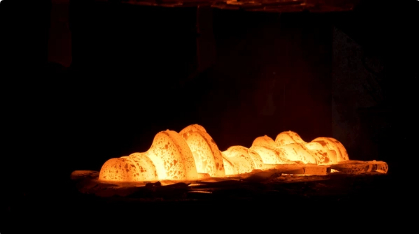Heat Treatment After Finishing: How and Why
Heat Treatment After Finishing: How and Why
Introduction
Heat treatment is usually performed before machining to improve the structure and hardness of the material. However, in precision manufacturing, the opposite approach — heat treatment after finishing — is becoming increasingly common.
The purpose is to stabilize dimensions, relieve internal stresses, and prevent deformation during service. This process is often called stabilizing tempering or stress-relief annealing.
Why Internal Stresses Appear
During machining, the metal undergoes localized deformation and heating. Even if the surface looks perfect, internal stresses remain inside the material. They may cause the part to warp or crack later, especially in long or thin-walled components.
When Post-Machining Heat Treatment Is Needed
-
Precision components (spindles, bearing housings, guides)
-
Thin-walled or flexible parts
-
Welded assemblies
-
Tools and molds after polishing
-
Aluminum or titanium alloys with high thermal expansion
Types of Heat Treatment After Finishing
Low tempering (150–250 °C) – relieves internal stress without reducing hardness.
Stabilization annealing (100–180 °C) – for stainless, aluminum, or titanium alloys.
Artificial aging (160–220 °C) – strengthens aluminum alloys.
Stress-relief annealing (200–300 °C) – for large or welded structures.
What Happens to the Metal
Heat causes stress redistribution, grain recrystallization, reduction in dislocation density, and overall structural stabilization — the metal becomes more dimensionally stable.
Important Considerations
-
Dimensional changes may occur
-
Hardness should be verified afterward
-
Ensure uniform heating and cooling
-
Protect surfaces from oxidation
-
Record temperature profiles for traceability
Practical Examples
Steel spindle (40Х) – tempered at 180 °C, deformation reduced fourfold.
Aluminum housings – stabilized at 160 °C, scrap reduced by 70%.
Mold components – tempered at 200 °C, service life increased by 30%.
Recommendations
-
Control temperature precisely
-
Use slow heating and cooling for large parts
-
If possible, heat-treat parts in their clamping position
-
Check dimensions after the process
Modern Trends
Use of small induction heaters, vacuum furnaces, and deformation sensors is growing. Heat treatment is becoming an exact, controlled, and repeatable process.
Conclusion
Post-machining heat treatment is a proven way to relieve stress, prevent deformation, and extend part life. When applied correctly, it becomes an essential step for stable, high-quality, and predictable production.

